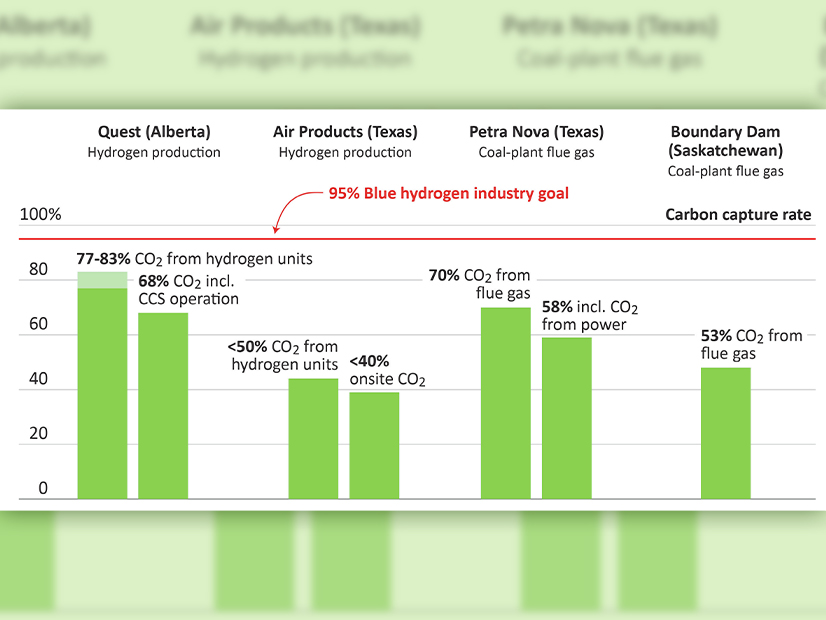
The private, nonprofit Institute for Energy Economics and Financial Analysis (IEEFA) argues that “blue” hydrogen, produced using natural gas, cannot be environmentally friendly or affordable.
In a report completed in February and discussed in a webinar Thursday, IEEFA analysts bluntly rejected the entire Department of Energy initiative to create regional hydrogen hubs producing and using blue hydrogen as a costly technological blunder based on “flimsy economic and environmental footing.”
Blue hydrogen production starts with high-temperature steam reforming of methane (CH4), splitting the hydrogen atoms from the carbon atoms. The resulting carbon dioxide is simultaneously captured and sequestered.
Gray hydrogen, in which the carbon split from the methane is not captured, has been produced for years as an industrial gas, frequently used in oil refining. It is significantly less expensive than green hydrogen, produced by electrolysis of water using renewable energy. Thus, blue hydrogen has been advocated by an avalanche of DOE and industry webinars and reports as a more environmentally friendly compromise.
But IEEFA is sharply critical of that argument. Because blue hydrogen is made from natural gas (which is 77% methane), any analysis of its environmental integrity must account for drilling, fracking and leakage at the well head and pipelines. Though methane only lasts about 12 years in the atmosphere, it is 25 times more effective at trapping heat than carbon dioxide.
IEEFA analyst David Schlissel said a major problem in making blue hydrogen as clean as green hydrogen is that at least 90% of the resulting carbon dioxide would have to be captured.
“Capturing 90% or more of the CO2 produced at a project is the holy grail for CCS [carbon capture and sequestration]. Proponents of blue hydrogen will say outright, or will more likely suggest or imply, that 90% carbon capture has been proven or demonstrated at existing projects.
“But this is not true. No commercial-scale project has captured 90% or more of the CO2 produced by the project over the medium or long term, by which I mean years and decades, which they will have to do if carbon capture and sequestration will be an effective tool for reducing CO2 emissions and concentrations,” he said.
“Achieving this goal sporadically clearly is not enough. Blue hydrogen combines the worst of two worlds. It uses fossil fuels and an unproven carbon-capture technology. What could possibly go wrong?”
Blue hydrogen’s reliance on CCS means it has “has very weak economic prospects,” IEEFA analyst Suzanne Mattei said. And sequestering carbon deep underground is another expensive technology that has not been proven to be economically viable, Schlissel said.
Mattei added another problem blue hydrogen producers will face: The cleaned-up gas is not as attractive to many corporate buyers as green hydrogen will be.
“The blue hydrogen projects are of limited value to investors who are looking to up their green credentials. Because they are pulling this fuel out of the ground, sending it through pipelines; and the leakage problems are significant, rampant really,” she said.
Proponents have asserted that they will use responsibly sourced natural gas, she said. But “a major theme of our report is that you have to look at the real-world experience … that the Environmental Protection Agency has been trying to control methane from drilling and pipeline transport for a long time,” she said.
EPA is currently trying to develop a new regulatory process, she added. If the agency is successful in forcing the gas industry to address the problem, the cost of gas will increase, she said.
Blue hydrogen “is both an environmental issue and an economic issue,” she said. “Not every invention makes it into the mainstream. And blue hydrogen has been trying to get into the mainstream for a long time; it’s just not happening.”
